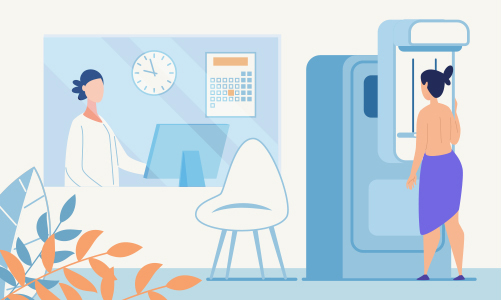 In today's busy world, it's easy to put off screening tests, like mammograms. But if you're a woman, it's crucial to remember this: Breast cancer is typically easier to treat when found early. And while mammograms aren't perfect, these x-rays still are the best tool we have for finding breast cancer in its beginning stages. They can detect breast tumors that are even too tiny to feel.
In today's busy world, it's easy to put off screening tests, like mammograms. But if you're a woman, it's crucial to remember this: Breast cancer is typically easier to treat when found early. And while mammograms aren't perfect, these x-rays still are the best tool we have for finding breast cancer in its beginning stages. They can detect breast tumors that are even too tiny to feel.Watson Clinic recommends that every woman receive annual mammograms beginning at age 40.
Women who are at high risk for breast cancer may need to start screening earlier or be screened more often. Factors that are considered high risk include:
• Having a family history of breast cancer.
• Inheriting a mutation in either the BRCA1 or BRCA2 genes.
• Having had radiation therapy to the chest area between the ages of 10 and 30.
• Having breasts with a lot of dense tissue.
In addition to getting regular mammograms, you should learn how your breasts normally look and feel. Breast self-exams are not a substitute for a mammogram. But they can alert you to any lumps or changes in your breasts. If you see or feel anything different or unusual, tell your primary care provider. During annual well visits, a clinical breast exam by your clinician is also recommended.
Don't delay
If it's been a while since you've had a mammogram, take the time right now to schedule a test. Sticking to a recommended screening schedule is key to early detection of the disease, which helps save lives. Talk to your primary care provider about when and how often you should be screened.
Watson Clinic offers the latest mammogram technology. To schedule your mammogram, call 863-680-7755, option 3.
Additional sources: American College of Obstetricians and Gynecologists; Centers for Disease Control and Prevention